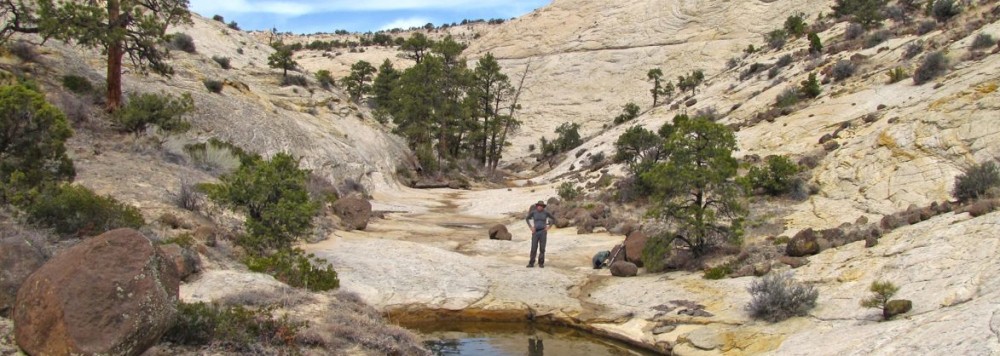 Cold weather locally kept us inside this week, so it was time to check the list of projects. Long list, but the most appealing project was to fit out a new set of bikepacking bags for the upgraded mountain bike. I’d spent an afternoon, before hiking into the Grand Canyon, penciling out the design for three new bags: a frame pack, a “gas tank” and a “jerry can” (as referred to by Revelate Designs, whose bike bags I admire and seat bags we already own). You can buy bags off the shelf but they aren’t custom enough for how I want them.
Cold weather locally kept us inside this week, so it was time to check the list of projects. Long list, but the most appealing project was to fit out a new set of bikepacking bags for the upgraded mountain bike. I’d spent an afternoon, before hiking into the Grand Canyon, penciling out the design for three new bags: a frame pack, a “gas tank” and a “jerry can” (as referred to by Revelate Designs, whose bike bags I admire and seat bags we already own). You can buy bags off the shelf but they aren’t custom enough for how I want them.
 This is the third set I’ve sewn up, so it’s mostly a matter of figuring out exactly what you want – where. Making the patterns is easy with construction paper, and mocking up the actual design sizes works best, as in the case of my penciled-up gas tank bag at 10″, didn’t give me enough straddle width, so I cut the pattern down to 9″ before cutting any fabric. Our 3’x5′ kitchen island makes a great layout and work
This is the third set I’ve sewn up, so it’s mostly a matter of figuring out exactly what you want – where. Making the patterns is easy with construction paper, and mocking up the actual design sizes works best, as in the case of my penciled-up gas tank bag at 10″, didn’t give me enough straddle width, so I cut the pattern down to 9″ before cutting any fabric. Our 3’x5′ kitchen island makes a great layout and work  counter especially with the similar sized lined and graphed craft mat for a protective surface. Cutting fabric with a roller knife makes layout and cutting even easier. Hardest part is figuring what you want on the inside, as those attachments, velcro straps and mesh netting all need to be sewn on before you assemble the sides, top and bottom. Great for keeping that aging mind from atrophying.
counter especially with the similar sized lined and graphed craft mat for a protective surface. Cutting fabric with a roller knife makes layout and cutting even easier. Hardest part is figuring what you want on the inside, as those attachments, velcro straps and mesh netting all need to be sewn on before you assemble the sides, top and bottom. Great for keeping that aging mind from atrophying.
Experience reminded me to add neoprene padding to the inside bottom surfaces so that tools,  your camera or iPhone don’t rattle against the frame as you go down those mountain trails. And I’ve added still one new innovation in the form of a map holder. Last several tries and the most recent Southern Tier ride challenged me to come up with a simpler, closer and easier to read map holder. We’ll see how this iteration works.
your camera or iPhone don’t rattle against the frame as you go down those mountain trails. And I’ve added still one new innovation in the form of a map holder. Last several tries and the most recent Southern Tier ride challenged me to come up with a simpler, closer and easier to read map holder. We’ll see how this iteration works.
Now there isn’t an excuse not to transfer that ultralite backpacking gear to the mountain bike a knock off another section of the Great Divide trail.

















































